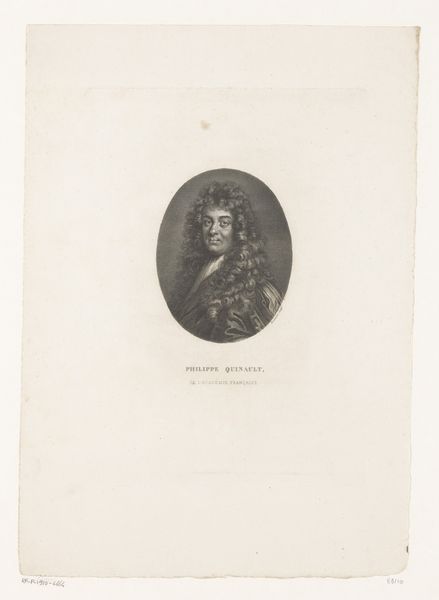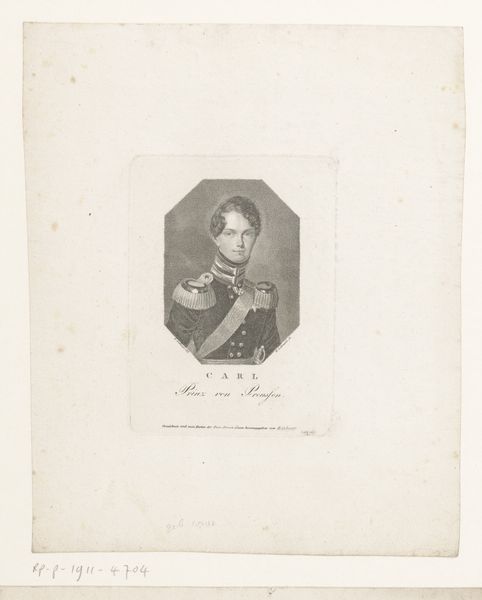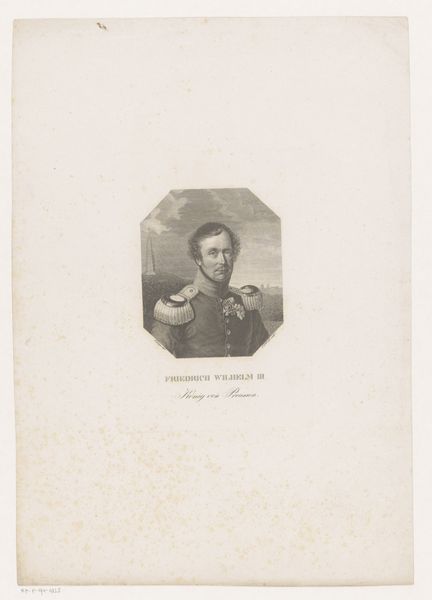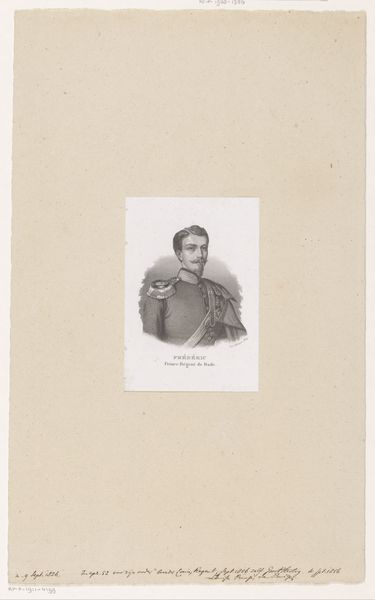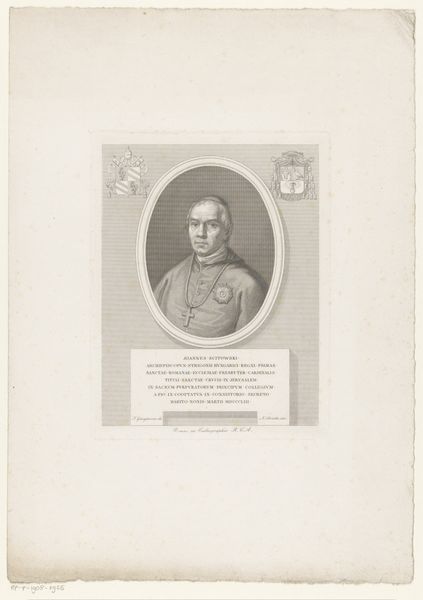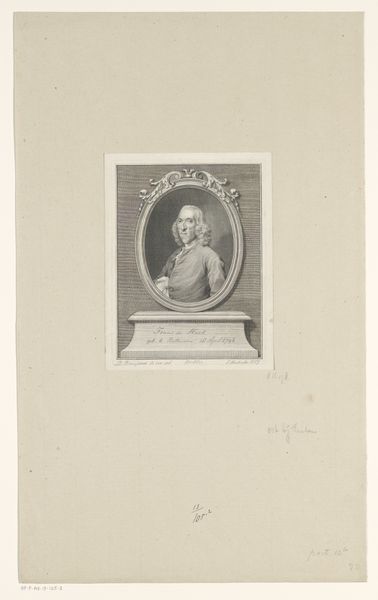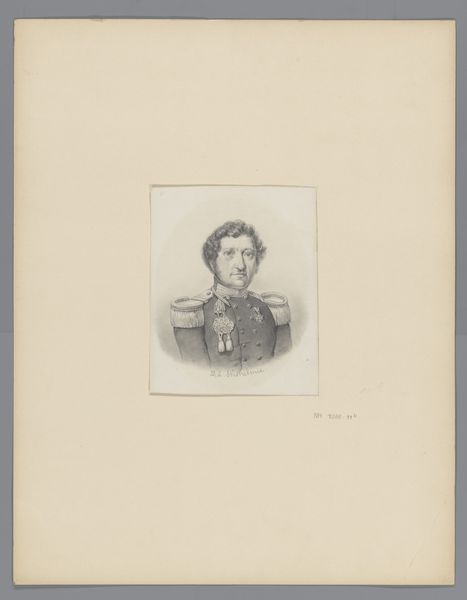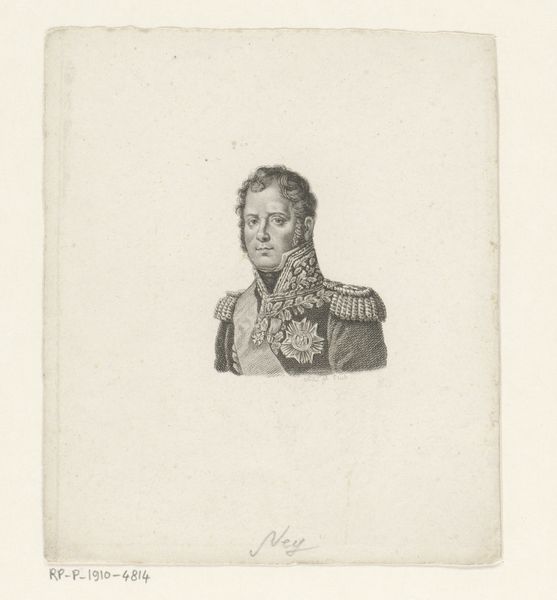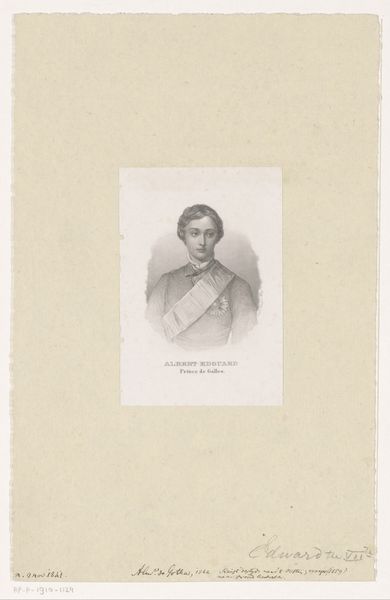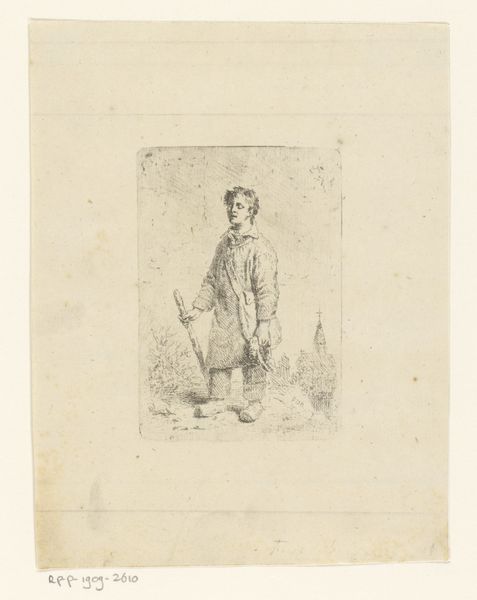
print, engraving
#
portrait
#
neoclacissism
# print
#
history-painting
#
engraving
#
realism
Dimensions: height 108 mm, width 72 mm
Copyright: Rijks Museum: Open Domain
This portrait of Louis I, King of Bavaria, was made by Johann Daniel Laurenz around the early 19th century. It’s a stipple engraving, a printmaking technique that relies on careful arrangements of tiny dots to build up an image. Laurenz used a sharp tool to create these dots on a metal plate, which was then inked and pressed onto paper. The density and distribution of the dots create the illusion of shading and form, giving depth to the King’s face and uniform. Stipple engraving sits between the traditions of drawing and printmaking, demanding a high degree of skill and control over the material. The process allowed for the relatively easy reproduction of images. This was especially valuable in the context of the early 1800s, when demand for portraits increased among the rising middle class, mirroring the desire for self-representation previously reserved for the aristocracy. By emphasizing the labor involved in creating this delicate print, we can appreciate how it democratized image-making, challenging traditional boundaries between art and craft.
Comments
No comments
Be the first to comment and join the conversation on the ultimate creative platform.
